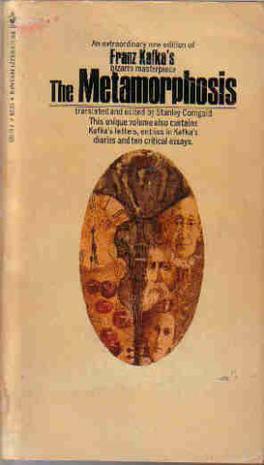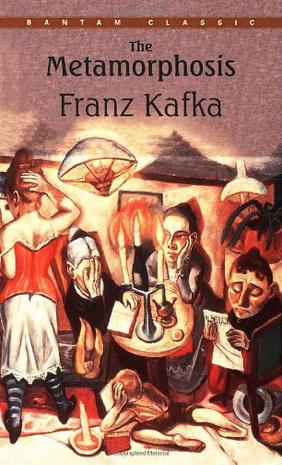欢迎来到相识电子书!
标签:FranzKafka
-
The Metamorphosis
Writings by and about Kafka and textual notes accompany this translation of his early-twentieth-century work. The Metamorphosis (in German, Die Verwandlung) is a novella by Franz Kafka, first published in 1915, and arguably the most famous of his works along with the longer works The Trial and The Castle. The story begins with a traveling salesman, Gregor Samsa, waking to find himself transformed into a giant "monstrous vermin" (see Lost in translation, below). It is widely regarded as a highly symbolic tale with various interpretations. From Publishers Weekly Kuper has adapted short works by Kafka into comics before, but here he tackles the most famous one of all: the jet-black comedy that ensues after the luckless Gregor Samsa turns into a gigantic bug. The story loses a bit in translation (and the typeset text looks awkward in the context of Kuper's distinctly handmade drawings). A lot of the humor in the original comes from the way Kafka plays the story's absurdities absolutely deadpan, and the visuals oversell the joke, especially since Kuper draws all the human characters as broad caricatures. Even so, he works up a suitably creepy frisson, mostly thanks to his drawing style. Executed on scratchboard, it's a jittery, woodcut-inspired mass of sharp angles that owes a debt to both Frans Masereel (a Belgian woodcut artist who worked around Kafka's time) and MAD magazine's Will Elder. The knotty walls and floors of the Samsas' house look like they're about to dissolve into dust. In the book's best moments, Kuper lets his unerring design sense and command of visual shorthand carry the story. The jagged forms on the huge insect's belly are mirrored by folds in business clothes; thinking about the debt his parents owe his employer, Gregor imagines his insectoid body turning into money slipping through an hourglass. Every thing and person in this Metamorphosis seems silhouetted and carved, an effect that meshes neatly with Kafka's sense of nightmarish unreality. From School Library Journal Adult/High School-Gregor Samsa wakes up and discovers he has been changed into a giant cockroach. Thus begins "The Metamorphosis," and Kuper translates this story masterfully with his scratchboard illustrations. The text is more spare, but the visuals are so strongly rendered that little of the original is changed or omitted. Though the story remains set in Kafka's time, Kuper has added some present-day touches, such as fast-food restaurants, that do not detract from the tale. He has used the medium creatively, employing unusual perspectives and panel shapes, and text that even crawls on the walls and ceilings, as Gregor does. The roach has an insect body but human facial expressions. Once he is pelted with the apple, readers can watch his rapid decline, as his body becomes more wizened and his face more gaunt. This is a faithful rendition rather than an illustrated abridgment. ---Jamie Watson, Enoch Pratt Free Library, Baltimore Book Dimension Height (mm) 175 Width (mm) 105 -
午夜的沉默
《午夜的沉默:卡夫卡幽默小品箴言精品集》是卡夫卡的幽默小品和箴言精品集,全面反映了卡夫卡的世界观、人生观和艺术观,从中可以看到这位犹太“鬼才”的许多真知灼见和思想火花。卡夫卡这个不幸的犹太人,由于自己的血统而深深感觉着是被排斥于人类世界之外的“无家可归的异乡人”,他以怪异的眼光和惊讶的神情观察人类社会,发现了人生的真正道路在一根绳索上,这根绳索不是绷紧在高空,而是专门用来绊人的。人类有两大罪状,一大罪状是缺乏耐性,另一大罪状是漫不经心,从而被逐出天堂。
热门标签
下载排行榜
- 1 梦的解析:最佳译本
- 2 李鸿章全传
- 3 淡定的智慧
- 4 心理操控术
- 5 哈佛口才课
- 6 俗世奇人
- 7 日瓦戈医生
- 8 笑死你的逻辑学
- 9 历史老师没教过的历史
- 10 1分钟和陌生人成为朋友



